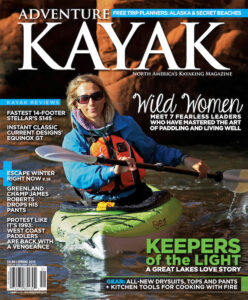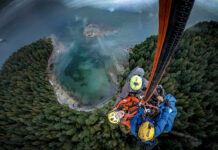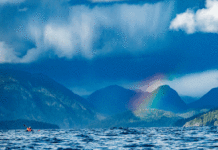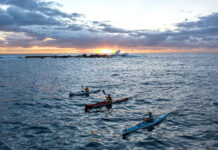Longtime disciples of the capricious currents at Skookumchuck Rapids, rough water paddlers Rowan Gloag and Costain Leonard knew exactly where—and when—to look for the perfect foam pile.
“We’re interested in finding out how much control we can have in the foam, in a sea kayak,” explains Gloag, a mission that prompted a late summer visit to Skook in British Columbia’s Sechelt Inlet.
When the difference between high and low tide in the constricted passage at Skookumchuck Narrows is less than a meter, the modest current forms the sort of friendly green wave that is the stuff of surf kayakers’ wet dreams. But when the celestial bodies align and a large spring tide widens that gap to two meters or more, the flood of water can reach 16.5 knots—one of the fastest tidal currents in the world—and a menacing foam pile takes shape.
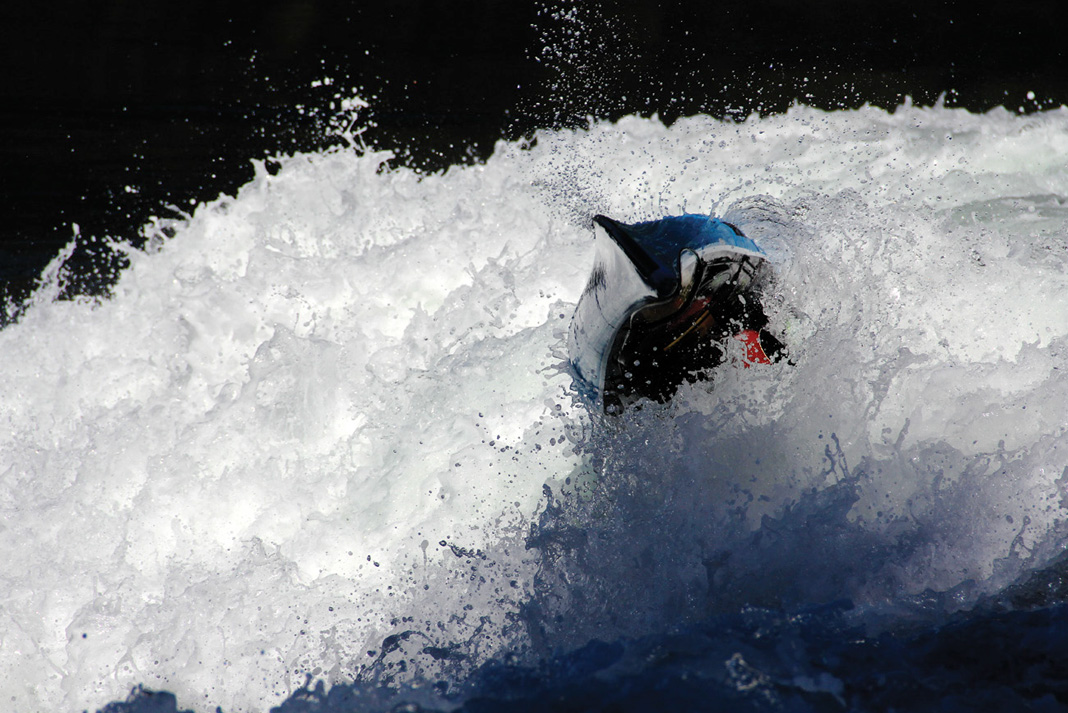
Charging into the recirculating maw of aerated water, Gloag says, develops skills necessary for playing safely in punishing ocean shore breaks. The length and shape of a sea kayak makes breaking free of all that foaming water a sticky proposition. Still, he says, “There are times during the chaos when we can gain control.”
Gloag took a timeout from Skook’s 10.9-knot current that day to shoot his hapless companion’s efforts to tame the hole. “In this picture, Costain has buried his bow in an attempt to launch himself free,” he recalls. “As you can see, it didn’t work, but you gotta try.”
